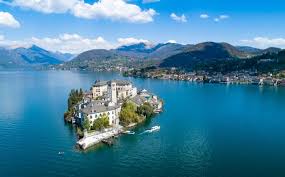Italy’s 10 most beautiful villages, according to our expert

The association dedicated to finding Italy’s finest villages has now listed 375. Here are our favourites, each gorgeous and not yet overrun
The idea was simple. Form an association and select Italy’s most beautiful villages as members. Founded in 2001, ‘I Borghi più belli d’Italia’ insists on places with fewer than 15,000 inhabitants, a rich cultural heritage, and an historic heart where more than 70 per cent of buildings date from before 1939. “Beauty” is a given.
Over the years, some 940 borghi – “village” is not quite the right word, but it’s near enough – have been evaluated. Around 375 have made the cut. Thirteen were added this year from a shortlist of 32. Not all, note, are yet on the association’s website.
I can’t claim to have visited all 375 villages, but over 35 years I’ve enjoyed a fair few. While I take mild issue with some listings, the borghi più belli forms an invaluable guide: visit a village on the list and you’ll rarely be disappointed.
Below are 10 personal favourites.
- Orta San Giulio
Piedmont
Piedmont is spoilt for pretty villages across its lakes, pastoral hills and Alpine valleys. My choice, Orta San Giulio, lies on one of the region’s smallest lakes, Orta, a quieter retreat than nearby Lago Maggiore. Sit in San Giulio’s main square for people-watching and views of the Isola San Giulio, the lake’s impossibly picturesque island. Next, take a stroll down the single main street, followed either by a loop around the headland or a short, sharp hike past the charming church of Santa Maria Assunta to the hill-top Sacro Monte chapels and more sweeping views.
- Castelrotto-Kastelruth
Trentino-Alto Adige
Kastelruth
We’re in the Dolomites, and a German-speaking corner of Italy that was formerly part of the Austro-Hungarian Empire. The look and feel is different to the rest of the country: onion-dome churches, for example, and a Teutonic rigour to the way things are done. Many skip Castelrotto in favour of the better-known Ortisei, nearby. Don’t. Both are lovely, but Castelrotto is a living village, Ortisei more a base for visitors. Frescoed houses line the spotless, cobbled streets and in summer window boxes overflow with flowers. Verdant fields frame the village against a more distant backdrop of the Dolomites’ magnificent – and unmissable – Alpe di Siusi.
- San Leo
Emilia-Romagna
San Leo in Emilia-Romagna
A long, wintery journey of delayed flights, slow trains and icy roads brought me, tired and hungry, and in darkness, to San Leo for the first time. Next morning, I looked out over the snow-dusted Apennines and explored one of Italy’s loveliest unsung villages. As so often, there’s not much to “see” here, just charm, quiet streets and long views. A lofty castle overlooks it all and below lies a vast, precipitous crag – the Pietra di Bismantova – so striking that Dante, who visited San Leo, used it to evoke the mountains of Purgatory in The Divine Comedy.
- Tellaro
Liguria
Tellaro in Liguria
Just eight or so miles from Tellaro, across the Gulf of La Spezia, are the Cinque Terre, among the busiest coastal villages in Europe, never mind Italy. Beautiful, to be sure – one of them, Vernazza, makes the borghi più belli list – but often compromised by the weight of visitors. Tellaro, by contrast, is barely known yet shares many of the Cinque Terre’s characteristics, including colourful houses tumbling down a verdant hillside to a charming seafront. You can hike in peace here and, unlike the Cinque Terre, Monterosso aside, there are beaches and good swimming nearby, not least at Punto Corvo and Fiascherino.
- Barga
Tuscany
Barga
As you’d expect, Tuscany has a host of glorious villages, with 30 ranked among the borghi più belli. Some of these are too busy (Pitigliano, Capalbio, Porto Ercole); a few (Castiglione di Garfagnana, Coreglia, Buonconvento) wouldn’t make my list; but others – Poppi, Lucignano, Cetona – are genuine, little-know treasures. Barga is my favourite, on the edge of the high Apennines in the north of the region, above Lucca. It’s perhaps more town than village, but no matter: the cathedral is sublime, the streets pretty, the views glorious, and the vibrant cultural life a sign of a thriving, living community.
- Scheggino
Umbria
Scheggino
Scheggino is one of the 13 villages added to the “most beautiful” list this year, a tiny place in the Valnerina, a wild valley in the mountains of eastern Umbria. I first stayed here 30 years ago and little has changed since: a single street, a fortified maze of alleyways, and a hotel-restaurant – Del Ponte – that combines local trout and truffles to wonderful effect. Drive or walk the riverside path south and take in the eighth-century San Pietro in Valle, among central Italy’s loveliest abbeys. Or head north, where the Valnerina’s Vallo di Nero, Norcia and Preci are also borghi più belli and others – San Felice, Caso, tiny Gavelli – could easily make the list.
- Frontino
Le Marche
Frontino
Frontino is tiny: more or less a single, short street on a fortified rocky spur framed by pretty, pastoral hills. Tiny, and with little to see, but as charming as you like. Aim for the Torre Civica, covered in Virginia creeper; vivid in spring, a beautiful, fiery beacon of colour in autumn. Or visit the Convento di Montefiorentino, home to a sumptuous panel by Giovanni Santi, father of Raphael. Like many borghi più belli Frontino requires a special journey – no-one comes here by accident – so combine it with trips to nearby San Leo (see above) or the hill-towns of northern Umbria just across the regional border.
- Castel del Monte
Abruzzo
Castel del Monte
One day, Abruzzo, east of Rome, will get the attention it deserves. Until then, its glorious mountain scenery and high, remote villages will remain largely unvisited. Yet the region claims 27 borghi più belli, just three fewer than Tuscany. Some on the list suffer from depopulation – one, Penne, is among the Italian villages selling “one-euro” houses to tempt incomers – but many (Opi, Scanno, Pacentro, Santo Stefano di Sassanio) cling to ancient ways of life and have unmatched upland settings. Castel del Monte is my standout, at the heart of the Gran Sasso National Park and close to the remarkable grassy uplands of the Campo Imperatore.
- Cisternino
Puglia
Trulli in Puglia
The association behind I borghi più belli believes a listing adds eight per cent to a village’s visitor numbers. Some villages, however, simply don’t need more attention. In Puglia, for example, Alberobello, noted for its distinctive conical trulli dwellings, is swamped in season but is due to be listed. Better to head for smaller villages such as craggy and newly listed Gravina or my favourite, Cisternino, which beyond its modern outskirts is a delightful medley of tiny alleys, sleepy squares and dazzling, whitewashed houses.
- Geraci Siculo
Sicily
Geraci Siculo
I’ve visited a few of the 21 Sicilian villages on the list over the years and it’s hard to choose between them. I love Cefalù on the northern coast – sipping fresh orange juice in the main square, admiring the Norman cathedral, is a special memory – but it’s more town than borgo. Gangi, moribund when I first saw it, has picked itself up, while I find Petralia Soprana too eerie for comfort. Geraci Siculo, though, spread over its high, remote ridge, half-forgotten in the depths of the Madonie mountains, is the epitome of the timeless Sicilian village.





